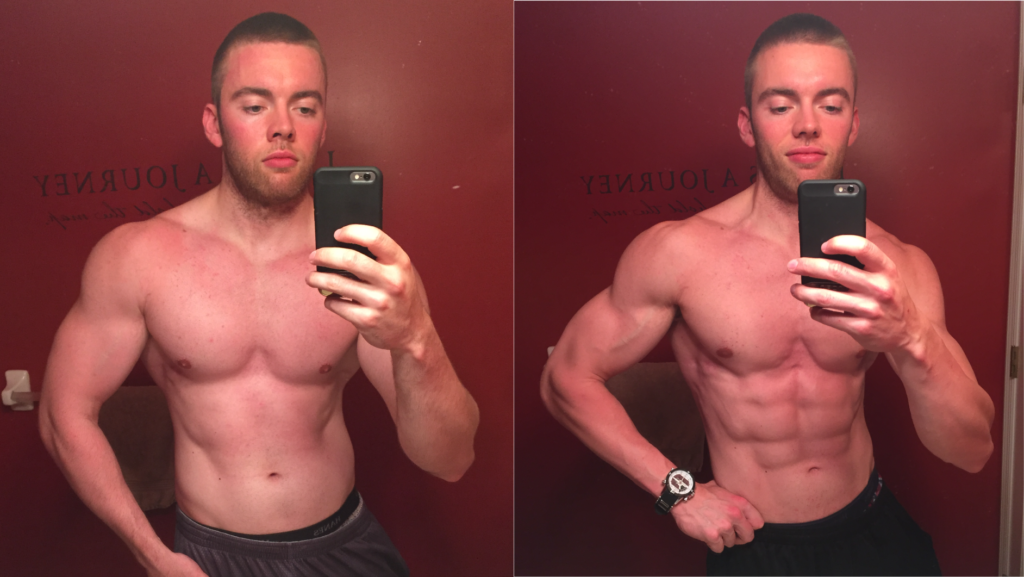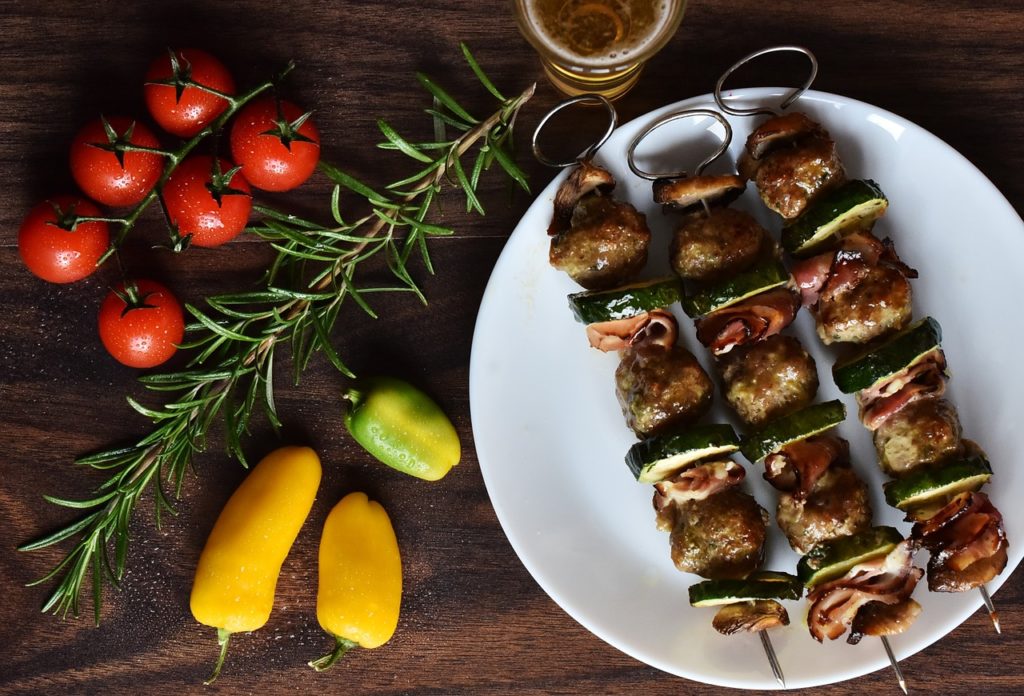
Losing weight in the age of social media. With the prevalence of fitness-related posts on the internet and social media, you’d think looking for advice on fat loss would be simple. Just hop on Instagram, go to your favorite instafit star’s page and you’re set. The problem starts when you begin doing a bit of browsing and find tons of conflicting information. Every single person tells you that their way works. This information overload tends to have the exact opposite outcome of the intended effect. It drives people away, believing they will never be able to start this weight loss journey because there doesn’t seem to be any clear-cut path. Today, we are going to set the record straight. This is your weight loss checklist. Do these things properly and you will have the recipe for success.
1. Caloric Deficit
The absolute, unquestionable, priority for weight loss is maintaining a caloric deficit. This simply means consuming less calories than you are burning. There is no way around this point. A diet’s success comes down to whether or not this is occurring. Regardless of the tactic used to get to this point (low carbs/fats, intermittent fasting, Weight Watcher’s points, etc.), this must be achieved to see any progress.
2. Protein Intake & Macronutrient Distribution
Adequate protein intake should be second on your list of things to focus on. Hitting this number is especially important for maintaining lean muscle, elevating metabolism, and improving recovery and immune function. Getting lean and losing weight is great, but you want to ensure that the vast majority of weight you are losing is coming from body fat and not muscle tissue. Consuming enough protein is a great start. The minimum amount of protein you want to shoot for in a day is your ideal body weight in grams. For example, if you are 200 pounds and your goal weight is 150, your minimum protein intake for the day should be at least 150g. This number will change depending on your overall lean body mass, goal, and activity levels.
Balancing out carbs and fats is how you steer your diet in the direction of fat loss or mass gain. There are no absolutes here. You can lose weight by dropping your fats, or your carbs, or both, and often it’s best to do whichever you prefer. The calories you cut from your diet will always come from fats or carbs, never protein.
3. Strength Training

Strength training and protein intake are pretty much interchangeable at #2 and #3 because they are working to accomplish very similar things. One of the primary things you want to do while losing weight is to maintain, if not increase, the amount of muscle mass you already have (this is how you lower your body fat percentage). Strength training is an essential component of this. Strength training also has the added benefit of using blood sugar and stored carbohydrates as fuel. This means, when strength training is properly paired up with cardio and a caloric deficit, you will be burning a greater percentage of calories from fat after a strength training session.
4. Food Quality
While balancing your macros relative to your overall calories is the most important thing to consider when structuring a diet, you must not forget the importance of food quality, especially when trying to lose weight. The quality of the food you consume has the biggest effect on the way you feel, and this can make or break a successful diet. Wholesome, “cleaner” food choices (you know what I’m talking about here) are much more satiating and will keep you satisfied for a longer period of time. This means you are less likely to snack — the greatest pitfall of most diets.
In fact, most times when I take on a new fat loss client, they have trouble eating all of the food in their plan (while they are losing weight!). The primary reason for this is they are changing their food sources from highly palatable, processed foods, to much more voluminous and satisfying foods. You can try to hit your macros eating tons of processed garbage and junk, and you will probably lose weight too (provided your macros are correct), but you will pay for it with how poorly you feel and how hungry you are.
5. Cardio
Notice where cardio is positioned on this list – after strength training. A common misconception for individuals looking to lose weight is that they have to start running or performing some type of cardio to shed the pounds. This is not inherently wrong. There is an obvious need to burn more calories and cardio, in its many forms, can certainly accomplish this. Strength training, however, is more important because of our desire to spare muscle mass. Workouts that consist of only cardio can be used in morbidly obese populations to help bring individuals down to more manageable weight (where they can begin strength training). But for the most part, even individuals with 100 pounds to lose are better off also incorporating strength training.
As for the type of cardio you do, there are two main types to perform when it comes to fat loss: Steady-state and Intervals. Steady state cardio refers to keeping the intensity of the exercise consistent throughout, while Intervals fluctuate between periods of intense activity and periods of lower intensity or even complete rest. The type that’s best for you will come down to your current level of fitness, the amount of weight you have to lose, and your other goals (build muscle, improve endurance, enhance speed, etc.).
This is a topic that deserves an article of its own, but here’s a tip for those just beginning a fat loss regiment. You want to lose fat by using as few tools as possible. Do not begin your brand new workout plan by suddenly doing cardio 5 days per week for an hour per day, with 3 days of strength training, and a 1200 calorie diet. This is a recipe for a massive plateau and very quick burnout. You would lose plenty of weight initially, but when that starts to slow down as it always does, you will be left with no room to manipulate your cardio or calories. Start slow, make gradual changes, and you will be on the road to successful, sustainable weight loss.
6. Food Logging

If there is one habit that I urge you to build, it is keeping a food log. Numerous studies have shown that the act of having to record everything you eat is enough to dissuade many individuals from picking up that extra snack at work or mindlessly grabbing a piece of pizza when they are out with friends. Keeping track of the amount of food you are consuming and ultimately knowing how many grams of fats, carbs, and protein you are eating is incredibly helpful for making adjustments to your plan.
Yes, this does require effort. Yes, it can be quite annoying to log every last thing you eat every day. But it works. The truth is once you’ve been logging your food long enough, you will begin to memorize the nutritional components of the foods you commonly eat. That’s when the process of food logging becomes second nature. You can literally look at a food and know pretty much exactly what you’re eating and how it fits into your day as a whole.
When you know exactly how much of each macronutrient you are consuming on a day to day basis (as well as calories, by default) you can make very simple manipulations to your diet depending on the changes you are seeing on the scale.
7. Nutrient Timing
Finally, we’ve made it to everyone’s favorite topic: nutrient timing. Those magical buzzwords that seem to control the fate of every last bite of food that passes your lips. You know, the rule that says if you eat after 8 pm, that meal is going to be stored as body fat. Or that breakfast is the most important meal of the day. IT’S SIMPLY NOT TRUE.
Now to be perfectly clear, nutrient timing does matter. But you have to understand the context in which it matters. There is a reason this is last on the list. Nutrient timing makes up the last 5-10% of importance in a diet in relation to every other variable here.
What does that mean? If you have the first 6 items down perfectly and your feeding times are as poor as they could possibly be, guess what? You will crush all of your goals and look and feel awesome.
Wait, you mean I can eat at night, even midnight? Yes.
The flip side is also true. You eat all your meals at the perfectly optimal times but your macros are off and your food quality sucks? Depending on how far off those other variables are, you will be struggling to progress.
The kind of nutrient timing that matters for everyone is quite simple. Avoid high fat-laden meals immediately before and immediately after exercise, and follow up your workout with a fast digesting protein and carb source. That’s pretty much all you should care about. The reason for avoiding lots of fat immediately pre-workout is because of how long they take to digest. A large bolus of fat sitting in your stomach during a workout can cause serious discomfort, or even vomiting. Post workout, you also want to avoid a high-fat meal because it will slow the speed at which the protein and carbs you should be consuming will be able to reach the working muscle and initiate the recovery process.
Beyond those basic rules, the only people that would ever need to be super attentive to their feeding times would be the athletes getting ready to compete in a bodybuilding or physique competition. At absurdly low levels of body fat, every single meal can change how you look. This makes a big difference on show day, but for the individual just looking to shed pounds and improve their overall health, the time that you eat your meals is going to make little to no difference at all.
No matter what your current plan looks like, it has the potential to be effective if it aligns with these 7 checkpoints. If you can see any holes in your current methodology, adjust them accordingly and you will be pleasantly surprised. If you have any questions about points made in this article or weight loss in general, don’t hesitate to contact me (contact button at the top of the page). Whether it’s a simple question, or you are interested in being coached through the process, I’m here to help.
Yes, this does require effort. Yes, it can be quite annoying to log every last thing you eat every day. But it works. The truth is once you’ve been logging your food long enough, you will begin to memorize the nutritional components of the foods you commonly eat. That’s when the process of food logging becomes second nature. You can literally look at a food and know pretty much exactly what you’re eating and how it fits into your day as a whole.
When you know exactly how much of each macronutrient you are consuming on a day to day basis (as well as calories, by default) you can make very simple manipulations to your diet depending on the changes you are seeing on the scale.
